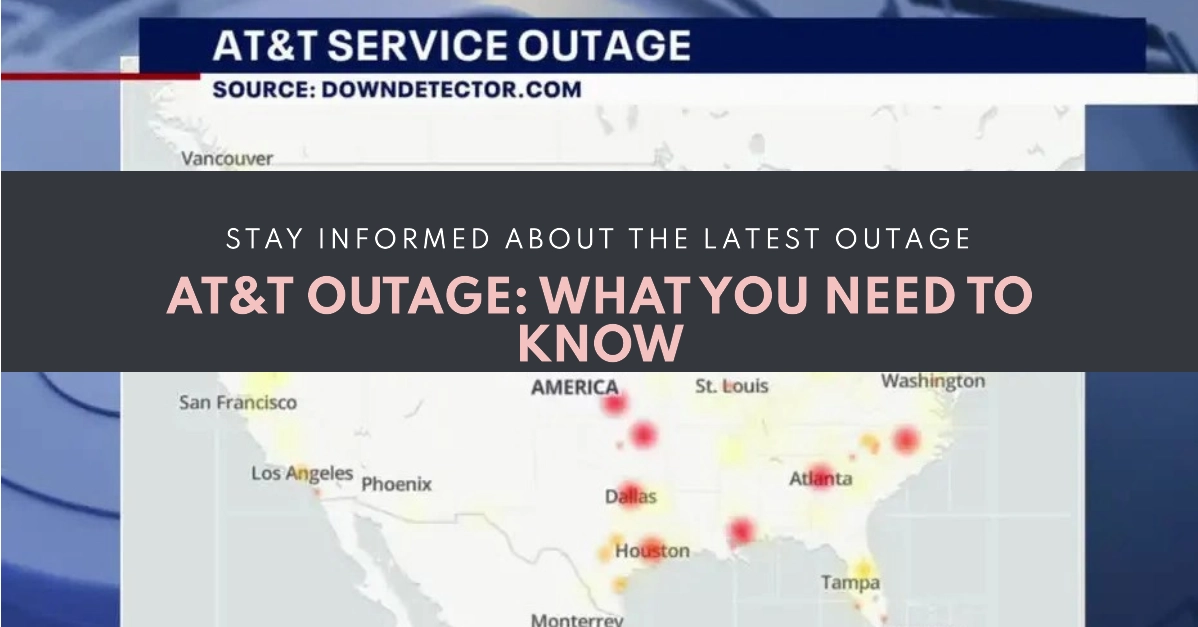Millions of AT&T customers across the United States experienced a significant service disruption recently. The outage affected voice calls, texting, and data connectivity, leaving many individuals and businesses unable to communicate effectively. While AT&T has since restored services, an investigation into the root causes of this incident is ongoing.
This article explores the potential reasons behind the massive AT&T outage and offers insights into how network providers can work to prevent such disruptions in the future.
Understanding the Impact of the Outage
The AT&T outage had a far-reaching impact on subscribers. Emergency services were overwhelmed with calls from concerned citizens unable to reach 911. Businesses relying on cellular services for transactions and communications faced operational challenges.
The outage highlighted the critical role telecommunications infrastructure plays in modern society and underscored the need for robust and reliable networks.
Possible Causes of the AT&T Outage
Several factors could potentially contribute to a large-scale telecommunications outage. Here’s a breakdown of some of the most likely suspects:
- Software Errors: Even the most well-designed systems can have coding errors or bugs. In AT&T’s statement, they cited an error within their network expansion process. If a software update or configuration change introduces a critical bug, it could lead to a cascading failure across the network.
- Hardware Failure: Physical infrastructure, such as cellular towers, routers, and switches, are essential components of any telecommunications network. Hardware failure due to malfunctions, power issues, or damage can cause service disruptions affecting specific areas or even the entire network.
- Cyber Attack: While AT&T denies any malicious attacks, cyber attacks such as Distributed Denial of Service (DDoS) attacks can flood networks with traffic, overwhelming their capacity and rendering them inaccessible to legitimate users. It’s crucial to investigate the potential of a cyberattack even when initially denied.
- Network Congestion: During peak usage periods or significant events (like natural disasters), networks can experience high traffic volumes. This congestion can strain network resources, potentially leading to slowdowns or complete outages for some users.
- Human Error: Even with sophisticated systems, human errors can have unintended consequences. Misconfigurations, accidental overloads, or incorrect procedures during maintenance can lead to problems that trigger a widespread outage.
Troubleshooting Network Outages (for users)
If you ever experience a cellular network outage, here are some troubleshooting steps you can take:
- Check Your Device: Ensure your device is on, has sufficient battery, and isn’t in airplane mode.
- Confirm Coverage: Check if others on the same network in your area are experiencing issues. Visit the carrier’s website or social media for official outage announcements.
- Restart Your Phone: A simple restart can often fix minor connectivity issues.
- Reseat SIM Card: If the outage seems localized, try removing and carefully reinserting your SIM card.
- Contact Customer Support: If the problem persists, contact your carrier’s customer support for assistance and updates on the status of the outage.
Preventing Future Outages: Lessons Learned
The recent AT&T outage serves as a reminder of the importance of proactive measures to minimize the risk and impact of network failures. Here’s what telecommunications providers can do:
- Robust Testing: Thoroughly test software updates and network changes in a controlled environment before widespread deployment to identify potential problems.
- Redundancy Systems: Implement redundancy by having backup systems and diverse network paths to ensure that services can remain available even if a primary component fails.
- Proactive Monitoring: Constantly monitor network performance to detect anomalies early, allowing for swift corrective actions.
- Effective Communication: Maintain clear and transparent communication channels with customers during outages to provide timely updates and manage expectations.
Final Notes
Large-scale network outages can be highly disruptive, but they also offer valuable opportunities to learn and improve.
By understanding the potential causes of failures and implementing preventative measures, telecommunication providers like AT&T can strive to build more resilient networks that better serve their customers.
Frequently Asked Questions
1. What was the primary cause of the AT&T outage?
AT&T attributed the outage to a coding error made during a network expansion process. This error appears to have caused a ripple effect that led to system-wide problems.
2. Was the AT&T outage caused by a cyberattack?
While the possibility of a cyberattack cannot be definitively ruled out, AT&T has maintained that the outage was not the result of malicious activity. Investigations are ongoing to confirm this.
3. How long did the AT&T outage last?
The duration of the outage varied depending on location. Some customers experienced service disruptions for several hours, while others had issues throughout the day. AT&T gradually restored service over the course of the day.
4. Could I have done anything to prevent my service from being affected?
Unfortunately, there’s nothing individual users could have done to prevent the outage, as it was caused by an internal issue on AT&T’s network.
5. How can I prepare for a potential network outage in the future?
- Know alternative contact methods: Have important phone numbers written down or stored in a cloud backup for access if your cell service is unavailable.
- Familiarize yourself with Wi-Fi calling: Many modern phones support Wi-Fi calling, which can serve as a backup if cellular service fails.
- Consider a backup carrier: If you rely heavily on cellular service for critical tasks, having a SIM card from a different carrier as a backup can be valuable.
